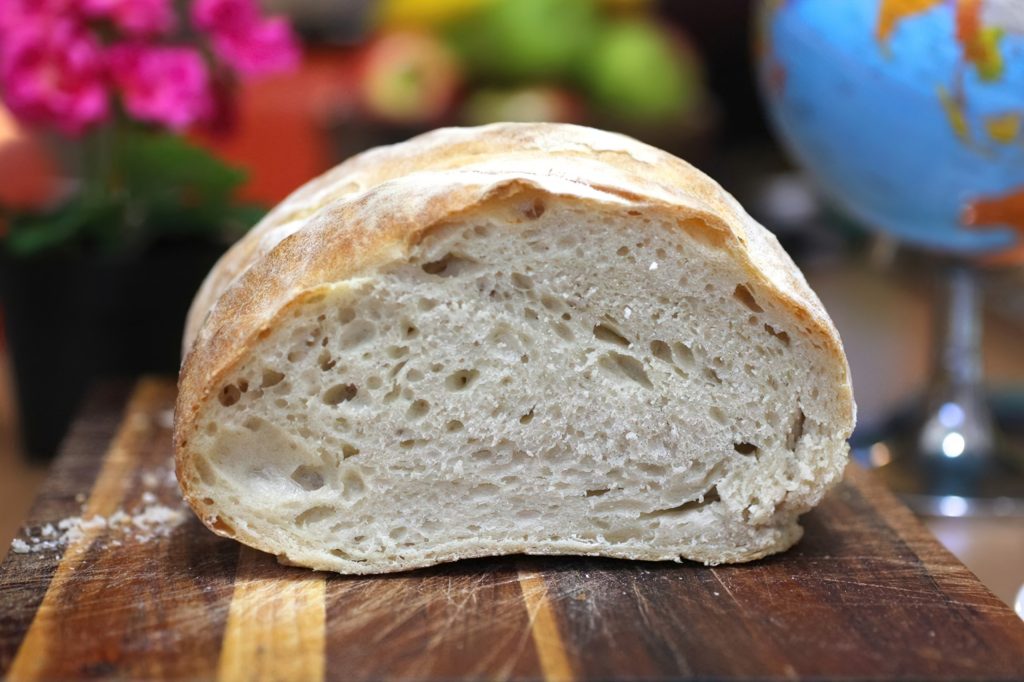Sourdough baking combines the art of culinary creativity with the fascinating science of fermentation. In this comprehensive guide for beginners, we will demystify the process of sourdough bread-making, covering everything from starters to storage, and offering tips and techniques to help you achieve the perfect loaf.
- Sourdough Basics
- Creating a Sourdough Starter
- Feeding and Maintaining Your Starter
- Mixing and Shaping Your Sourdough Loaf
- Baking Your Sourdough Bread
- Troubleshooting Common Sourdough Issues
- Experimenting with Different Flours
- Incorporating Add-ins and Flavors
- Sourdough Variations and Recipes
- Storing and Enjoying Your Sourdough Bread
- Conclusion
Sourdough Basics
Sourdough bread, a beloved staple in many kitchens, is unique due to its natural fermentation process. It relies on wild yeast and lactic acid bacteria to leaven the dough, resulting in a tangy flavor and chewy texture. Here’s what you need to know to get started with sourdough baking at home.
Creating a Sourdough Starter
A sourdough starter is a mixture of flour and water, which cultivates wild yeast and bacteria from the environment. To make your own starter, combine equal parts of flour and water and let it sit in a warm, draft-free area. Feed your starter daily with fresh flour and water until it’s bubbly and active.
Feeding and Maintaining Your Starter
Regular feeding is essential to keep your sourdough starter healthy and active. Feed it equal parts flour and water once or twice a day, discarding a portion of the starter before each feeding. If you don’t bake often, you can store your starter in the refrigerator and feed it weekly.
Mixing and Shaping Your Sourdough Loaf
To make a sourdough loaf, mix your active starter with flour, water, and salt. Knead the dough until it’s smooth and elastic, then let it rest and rise. After the first rise, shape your dough into a round or oblong loaf, and let it rise again in a proofing basket or on a floured surface.
Baking Your Sourdough Bread
Preheat your oven with a dutch oven or baking stone inside to create steam, which helps your bread rise and develop a crispy crust. Score your dough with a sharp knife or razor to allow for expansion, then carefully transfer it to the preheated vessel. Bake your sourdough until it’s golden brown and hollow-sounding when tapped.
Troubleshooting Common Sourdough Issues
If your sourdough doesn’t rise as expected or has a dense texture, check your starter’s activity and the temperature during fermentation. Adjust your feeding schedule and proofing times as needed. For a stronger sour flavor, try a longer fermentation time or a cooler environment.
Experimenting with Different Flours
Expand your sourdough repertoire by trying various types of flour, such as whole wheat, rye, or spelt. Each flour imparts unique flavors and textures to your sourdough, so don’t be afraid to mix and match. Be aware that different flours may require adjustments in hydration levels and proofing times, so pay close attention to your dough’s consistency.
Incorporating Add-ins and Flavors
Enhance your sourdough creations by adding nuts, seeds, dried fruits, or herbs to the dough. These add-ins not only contribute to the taste and texture but also allow you to personalize your bread. Fold your chosen ingredients into the dough during the shaping process, making sure they are distributed evenly.
Sourdough Variations and Recipes
Once you’ve mastered the basic sourdough loaf, explore other recipes that utilize sourdough starters, such as:
- Sourdough Pizza Crust: Use your sourdough starter for a flavorful, chewy pizza base.
- Sourdough Pancakes: A great way to use discarded starter, these pancakes are light and tangy.
- Sourdough Baguettes: Achieve a crusty exterior and open crumb with this classic French bread.
- Sourdough Focaccia: Infuse your sourdough with olive oil and herbs for a delicious flatbread.
- Sourdough Pretzels: Transform your sourdough into a salty, chewy snack or sandwich bun.
Storing and Enjoying Your Sourdough Bread
To maintain the freshness of your sourdough bread, store it in a bread box or wrapped in a cloth at room temperature. Avoid plastic bags, as they can make the crust soft and encourage mold growth. If you’re not planning to eat your bread within a few days, consider slicing and freezing it for later use.
Conclusion
Sourdough baking is an enjoyable and rewarding process, offering a deeper understanding of the science behind bread-making. With practice and patience, you’ll be able to create delicious, artisan-style sourdough bread in your own kitchen. Start your sourdough journey today and discover the magic of natural fermentation!

